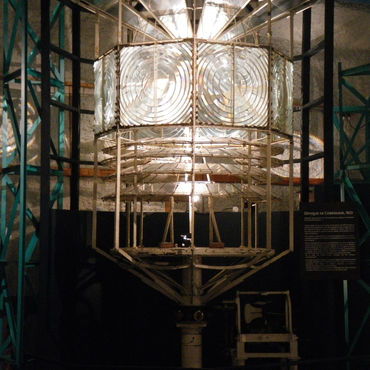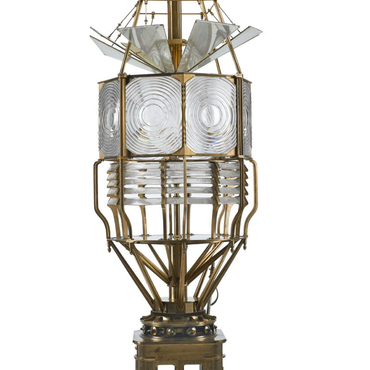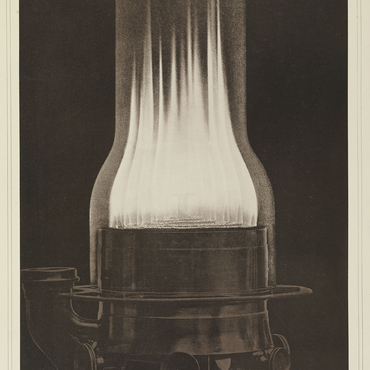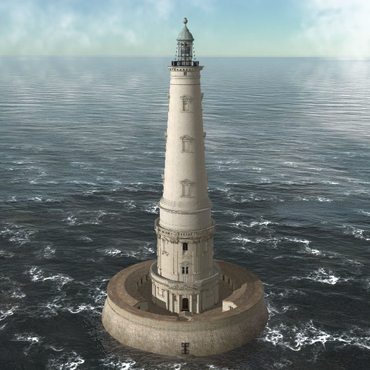
- Home
- Fresnel’s laboratory
- Cordouan, testing ground for Augustin Fresnel
- Cordouan's first lens
In July 1823, Fresnel installed his first lens in the Cordouan lighthouse. It had required only three years, almost to the day, to go from an idea to a final creation. The lens Fresnel installed that year consisted of a central octagonal-shaped drum fitted with eight stepped lenses with a focal length of 0.90 cm. At the base, he installed a ring of metallic mirrors that reflected the outer rays of light towards the sea. In the upper part, he placed eight small lenses that captured the upper rays and directed them towards the mirrors pointed at the horizon. Out at sea, the Cordouan lighthouse appeared like a steady light that pulsed with a brighter light for a few seconds each minute and then faded. The glass array was held in place by a metal framework arranged around a rotation axis. A weight-driven clock mechanism fitted with a ball escapement regulated the light's rotation. The mechanism had to be wound by the keeper each day. At the centre of the lens was an important innovation – a lamp with five wicks. To increase the strength of the signal, the strength of the lamp had to be increased as well. Fresnel used cylindrical wicks found in the Argand lamp, which he improved by nesting them one inside the other. Finally, to prevent heat from destroying the soldering points, he pumped away excess vegetable oil using a small clock mechanism that had been invented by Bertrand Guillaume Carcel in 1800.



